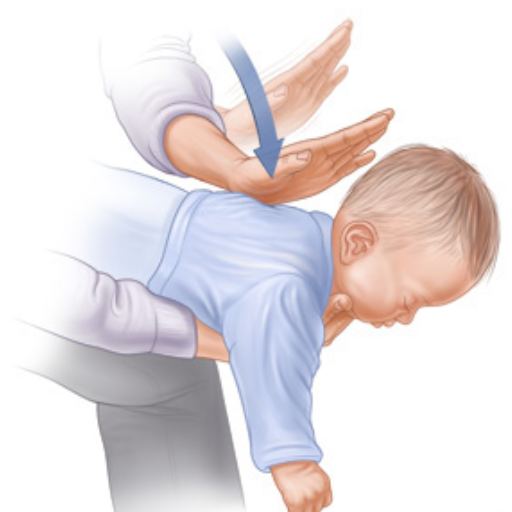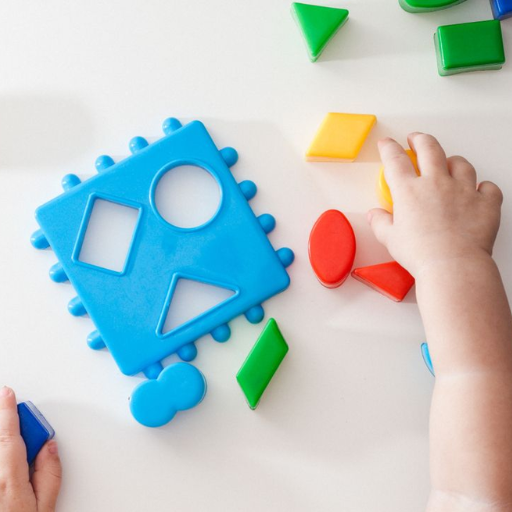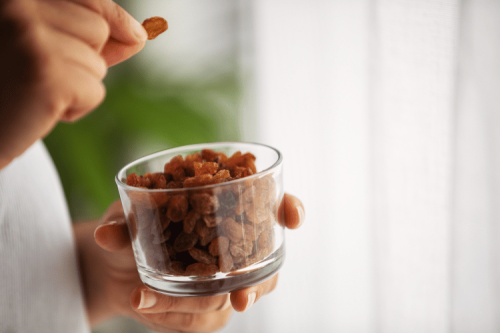
When caring for infants and young children, choking can be a fairly common occurrence, which may prove to be fatal in some cases. While there are plenty of choking hazards an individual needs to be aware of, Preventive measures must also be taken to reduce the risk of the infant or young child choking. This post will review the guidelines provided by the American Academy of Pediatrics (AAP) in extensive detail. These guidelines can prove to be critical in identifying the risks of choking and the procedural steps involved in dealing with the risk of choking on a broader scale. Suppose these expert-endorsed practices regarding the American Academy of Pediatrics (AAP) are followed closely. In that case, it will be pretty easy for readers to protect infants and sound children. The article is divided into three sections: Common choking hazards by age, Prevention tips and safe practices, and how to effectively deal with a choking incident.
What are the most common choking hazards for children?

In the lifespan of a child, there are many risks of choking, and it usually depends on how old the child is. Infants and toddlers tend to choke on small food items such as nuts, grapes, hotdog chunks, popcorn, etc. Moreover, small balloons, marbles, buttons, and tiny toys are also classified under non-food items, which are a risk since these items can easily cover a child’s airway. In the case of older children, they may chew on bulkier food items that can lead to choking, however, children tend to speak or even laugh while eating which causes them to choke. It is essential for children to know these hazards and how to deal with them.
Food-related choking hazards
Grapes, which should be cut into smaller pieces, and sticky foods like peanut butter and jelly sandwiches are the most common food-related choking hazards for children.
Non-food choking hazards
Unfortunately, the adverse effects caused by food-intolerant choking hazards are most commonly seen in children of a younger age due to their developmental stage, which engages them to further explore objects by putting them into their mouths. Such items could range from small bits and pieces of toys and plasticware to bolt batteries obstructing the breathing passageway. The aforementioned type of battery even has the properties of including corrosive leaking chemicals, making it worse due to the possibility of it blocking the airway.
A further variety includes non-consumable food objects that are household commonplaced items such as the locks attached to a jet clip and even unmatched or burst balloons, which can more than easily fit into a household mouth and mislead the child. Other such items that work include paper clips and even universal pen caps that a child can fit into their mouth and suffocate. Candidate items according to the choking risk the child may face include trivial adjustable parts of sewing machines or caps off mechanical pencils. Guidelines dictate that for children less than or equal to 3 years old, items 5.7 cm smaller than 2.5 cm in diameter are extreme risks.
This constant checking and monitoring, as well as keeping such items out of comparison or easy access for the child, can assist parents and caregivers in countering choking cases. Keeping an eye on or checking those toys regularly can further ensure safety.
Age-specific choking risks
Young children, specifically infants in the age group of 0-12 months, tend to face choking hazards from small food items like nuts, hot dog pieces, and grapes and even from non-food items like buttons and small toys. It’s important to cut food into approximately 1.25 cm pieces in each direction or smaller and to completely avoid giving hard and round foods until the child reaches a year.
Kids between the ages of 1 and 4 are more mobile and unusually inquisitive, which leads to various choking hazards, including large pieces of food like sticky candies, grapes, popcorn, and so on. Also, avoid giving toys over 5.7 cm long and 3.2 cm wide.
Children ages 5 years and up face quite a few choking hazards, but those are more due to misadventures like eating and running simultaneously or even having a conversation. However, there is no replacing the need for adult supervision. Children face many risks as they are still growing up, so instilling many basic concepts can go a long way.
Since altering the surrounding environment according to the child's growth can significantly reduce the occurrence of a choking incident, there are plenty of recommendations mentioned above that can be followed.
How can parents prevent choking in infants and young children?

Infants and young children can be protected from choking hazards by following specific future patterns of choking dangers like nuts and whole grapes, selecting the appropriate age food options properly, cutting food into desired chipped sizes, and using nuts that are easier to chew. Parents are encouraged to supervise their children while eating and promote after-eating activities like walking, playing, or talking. While doing it, check for safety toxins and toys that are large enough so that they cannot choke someone. It Will Help In Reducing Risk. Also, Learning Basic First Aid Techniques And Active learning of Infant And Child Choking Response Can Be Fatally Helpful.
Mealtime safety practices
Per my observation and experience, ensuring the protection of children during meals could be achieved through constant supervision of little ones during mealtime, training the child to sit down for meals, and prompting the child to chew mouthfuls well before swallowing. I also consider a soft and developmentally suitable diet that includes fruits and vegetables cut into pieces, minimizing choking risks. I do not give inhalation hazards such as whole nuts, popcorn, or hard candy. I also try to know first aid procedures for choking to respond appropriately with the method in which the event would occur.
Childproofing Your Home
To ensure safety when leaving a child alone, tipping over the furniture as it collapses. If someone has a child, they never secure dressers, shelves, or dolls to walls, so they seem suspicious. Many parents seem to have a misconception about covering electrical outlets with sliding plates or installing security latches and locks on play cabinets where children keep medication or even wooden sticks.
Some children even have toys with small loose magnets, which are ideally unsafe as children face breathing problems while trying to swallow them. It is evident that children over 3 years could only play with toys with a part larger than 1.25 inches based on the logic of choking hazards. A term called a Locking Mechanism refers to towering fastening systems that should be mounted on dollars to provide better access as ABICS does.
Locks or window guards should be fitted on the windows so they cannot be opened more than 4 inches. Detachable cords should be removed from window blinds or replaced with cordless ones to reduce the chances of strangulation. In addition, small carpets or mats should have non-skid or non-slip backing to minimize the chances of falls. Finally, smoke detectors and carbon monoxide alarms should be fitted in each home, and their batteries should be changed every second year. A fire EXTINGUISHER should be available in the kitchen in emergencies.
Educating older siblings and caregivers
Other caregivers and older siblings of the children must be trained on safety practices as this helps keep children safe at all times. , I state that household members must be properly educated regarding safety precautions, such as securing medicinal products, handling instruments of a sharp nature, and toys being devoid of tiny detachable pieces. For older siblings, I promote developmentally appropriate tasks such as teaching them how to store dangerous items in overhead cabinets or to pick up all toys off the floor to reduce slips. Adult guardians must comprehend prescribed safety standards, which include the presence of window guards measuring no more than 4 inches of unclipped space and plugs that conform to carrying the ANSI standard identified as tamper-resistant whether required by the NEC or not. Furthermore, I also ensure that everyone is reminded not to forget about doing monthly tests on smoke-certified devices and carbon dioxide alarms whilst changing batteries every half of the year. These battery alarms commonly set the standard fixing regulations to follow.
What are the signs that a child is choking?

Choking in children has several tell-tale signs. These include, but are not limited to, breathing difficulties, lack of voice (speaking, crying, or making other sounds), and excessive coughing or gagging. Physical symptoms may incorporate the clutching of the throat rooted in fear, the bluish coloring of the lips or skin due to insufficient oxygen (cyanosis), a hoarse voice, or a barely audible cough. It’s worth noting that a wholly obstructed airway can result in loss of consciousness in a child. Now, that brings us to the crucial factor of recognizing these signs for follow-ups and further procedures. Otherwise, further risks might put children’s lives in jeopardy.
Recognizing Choking in Infants
To recognize choking in asphyxiation infants, it simply requires proper identification of the non-ability to breathe out or gasp. For instance, weakness or a non-existent sound of a cry, a sound like stridor that develops when drawing breath, a cough that does not replace the blockage, and an apparent inhalation that retracts the chest wall. Besides, such patients will have either a normal or a lowered saturation of the skin (an asphyxia patient is often pale or blue, particularly on the lips and face). All of this is about morphology – for instance when the volume on the trachea is such that it becomes impossible to inhale or exhale, an infant can panic and cry out wide-eyed or stop screaming altogether.
Considering Technical Parameters for Infant Choking Recognition:
- Respiratory Rate: One of the key indicators in this aspect is the rate of inhalation and exhalation cycles; officially, for infants, the rate is between 30 and 60 inhalations or exhalations in a minute. When looking at an individual's rate of respiration and seeing a slowed-down rate of breathing or none at all, it signifies an airway that has been entirely clogged or is on the verge of being clogged.
- Heart Rate: A baby's average heart rate tends to be between 100 and 160 bpm, which is rather high. Any rate below a hundred constitutes an alarm, and together with other negative signs, it can mean that there is a critical lack of oxygen.
- Oxygen Saturation (pulsed oximeter if present): Infant monitoring should be around -95 minus percent normon. Immediate care should be provided as soon as you go below 90%.
- Crying or Vocalization: An infant who is choked is likely to lose his ability to scream or would do so with much difficulty; this occurs due to the restricted airflow that flows into the lungs.
Quickly detecting the signs and performing back blows and chest thrusts are significant in choking to prevent adverse outcomes.
Identifying Choking in Older Children
People often find it challenging to understand the concept of choking while it's gripping someone. There are multiple signs visible on a person choking, and there are technical aspects that can alert people of this threat. For instance, a common occurrence for a visible sign of an individual choking would be a child grabbing their throat and trembling, feeling helpless, or struggling to cough, and alongside this, a sign of bluish skin color / their skin appears bluish, which signals insufficient oxygen supply in their body. All the above signs mean only one thing: a person is facing difficulty in breathing, which could lead to death if not treated on time.
Age and Symptoms Choking Parameters:
- Emotional Signs Restrain—Emotionally, older children tend not to breathe in common places such as classrooms and instead try to breathe through their mouths. Shouting, incomprehensible sounds, and always intonating the same loud voice can be alarming. It is estimated that older children have a maximum of 30 unremitting breaths every minute, which can potentially lead to a crisis.
- Bloody Heart Rate—A child's regular heartbeat depends on their age, but it's typically considered to be between 70 and 120 beats. In the context of choking signs, resting heart rate is an important decision that can point towards tipping signs. Having a slower-than-normal heartbeat (more than 60 BBM) could explain why someone is struggling while choking.
- Survival Rate Indicators if SpO2 is available—Proper pulse oxygen saturation is also important for such an indicator, which can be applied to 95% to 100% of average persons. A common description of individuals who fall into the 90% saturation range is people who seasonally suffer from hypoxemia. Ignoring that indicator can cost someone their life. It's a sign to get immediate help.
- Coughing threshold—provides ample opportunities for effective coughing. All the above-defined symptoms can lead to belching and coughing, provided that the elbow is pressed against the diaphragm. If the head is inverted correctly, all airways would be slightly opened, which signals a minor Iliad choke. All the above-mentioned warnings point towards the person either amply choking to the point of everyone around him hearing a noise or possibly dying.
If you suspect that someone is choking, try to ascertain how severe the choking is by assessing the ability of the child or adult, in the child's case, to cough, speak, or breathe. In case of partial obstruction, engage the child in attempts to cough with force to remove the object from the lung. However, lifesaving measures like the Heimlich maneuver (abdominal thrusts) should be implemented in the case of complete obstruction. Avoiding delay is crucial in reducing the chances of airway collapse or even more dire events.
Differentiating between partial and complete airway obstruction
I consider some relevant markers when choosing between a complete and partial airway obstruction. Some airflow is still possible with a partial blockage so that the person can talk, cough, or even wheeze, but he or she looks rather anxious. Meanwhile, with a total blockage, she is unable to speak; inhalation and exhalation are accompanied by coughing and panic, but speech is not possible. If partial obstruction is the case, I would instead urge him to cough as forcibly as possible so that the obstruction could be removed. But when the patient's airway is fully obstructed, I will vie and do the abdominal thrusts on him to banish the lack of airflow and to avoid any possible circumstances that would take longer, introduce severe consequences, or even death.
What first aid steps should be taken if a child is choking?

When administering first aid to a choking child, you should follow a sequence of actions and move fast. In the first instance, determine whether there is a complete or partial airway blockage. When the child can cough or breathe easily ,and the blockage is only partial, encourage the child to cough until the object is dislodged.
If the airway is completely blocked and the child can neither breathe nor cough or speak, then do the following immediately to save their life:
- Send for Help - Call the emergency numbers or ask someone else to do so while you attend to the child.
- Apply Back Slaps: Have the child lean forward. Then, with your palm heel, slap the child from five times up to a maximum of five firm back between the shoulder blades.
- The Heimlich: After standing behind the child, make a fist and position it just above the child’s navel. Cover the fist with the other hand. Initiate up to five forceful thrusts in an upward motion.
- Reverse as Required - Once or twice, consider switching the two methods if the child hasn't expelled the foreign object. Use professional help whenever necessary. Continue doing so until the foreign object has been dislodged.
- Begin CPR when Unresponsive - Shake, and if the child is not responsive, then perform Cardiopulmonary resuscitation definitely on a flat surface, placing him in the correct position.
Even though the offending item might have been removed, it is advisable to always obtain a medical assessment after a choking episode to rule out any further issues. Timely action and observation of the correct methods can help save a child's life.
First Aid for Choking Infants
In the unfortunate event that kids start choking, here are the crucial steps to administer first aid.
- Examine the situation—Yes, it is important to make sure because not all infants make a distinct sound. For example, they may breathe heavily, cough softly, or even cry. If the infant is breathing heavily, I suggest letting them be.
- Position and Hold the Choking Child the Right Way – For children who are distressed and cannot breastfeed, then hold them face down on your forearm while ensuring that the infant's head is lower than chest level.
- Strike Child’s Thigh to Aid Coughing – Using the heel of your palm, smack the infant five times between their shoulder blades,and if that doesn’t work, then
- .If smacking the infant's back isn’t helping - Turn the baby to its back side while grabbing its head and then using your index finger to strike five times in the sternum just below the nipple line.
- Keep Repeating – If none of those mentioned above steps work and the child remains unresponsive, try alternating between five back blows and five chest strikes.
- Anytime an infant becomes unresponsive, it is proper protocol to sprinkle their lips with air. Even if an assessment of their mouth clears them of any blockages, it is crucial to first place them on a needle bed and start doing CPR. As a matter of urgency, always make sure an emergency service is contacted.
Relatives are still advised to seek health attention anyway because of their health aftermath. If nervousness or anxiety worries you, cast it aside and focus on what to do. If anything else, embarrassment is not at stake here; you aim to assist the helpless.
When to seek emergency medical help
In the provided example, if a person is choking or doesn't react, call for emergency medical services right away and dial 911. If the child can’t breathe, for example, or is unresponsive, regardless of CPR, a concentration of severe airway obstruction is still present. A 911 call can be worth it as long as anyone is barraged by punched force towards the chest. If going for the object alone isn't enough, seek help. Keep watching the oxygen saturation level through a pulse oximeter - anything below 90% hypoxemia counts only if required; look out for signs that one or both of the lips, skin, and several parts turn blue, indicating a lack of oxygen. Prompt and adept assistance from the emergency services averts risks of laryngoscopy and intubation problems that might compromise or obstruct effective ways of breathing.
What is the AAP's policy statement on choking prevention?

Their policy statement states that the American Academy of Pediatrics adopts a more proactive approach to choking prevention. These include devising ways to prepare safety standardized products for children, cutting high-risk foods into smaller sizes, such as grapes and hot dogs, and educating the public on the dangers of choking. Moreover, the AAP calls for greater focus on non-food choking hazards, such as small toys and objects. The AAP adopts an approach that utilizes age-appropriate preparation techniques, including more stringent labeling of high-risk foods. Furthermore, the policy details the methods that are needed to train caregivers to understand how to deal with choking children efficiently. The strategies and approaches taken focus on minimizing the cases of injury and deaths resulting from choking incidents.
Key recommendations for parents and caregivers
Delivering any kind of assistance and support as a parent or caregiver, some particular tips might help avoid choking hazards for children. First, I am always careful never to give small hard candies or nuts to younger children while ensuring food safety by cutting hot dogs, grapes, or raw vegetables into small pieces that kids can chew easily. I do not ignore small toys, coins, or batteries as they are potential choking hazards, and I do my best to keep them away from children. In addition, I make it more of a point to take care of young ones when they are about to eat or play to reduce any chances of choking. Finally, I have gone through a certified first aid and CPR course that assists in being ready and taking immediate action in the case of any emergencies that may arise. Since prompt action is almost always crucial in saving a patient’s life, it is very beneficial. Serving those functions makes me feel I am doing something to keep my child safe.
Guidelines for Manufacturers and Policymakers
To reduce the cases of children choking, manufacturers and policymakers need to streamline measures and come up with evidence-based strategies. Manufacturers should focus on the children’s safety for the products they intend to manufacture. Toys for children aged below three should not contain small parts as defined by the ASTM F963 in place or the European EN-71 standard that doesn't cover any parts with a diameter less than 1.25 inches or a length less than 2.25 inches without posing a risk of choking. Ages and risk warnings should be written in clear, bold, visible language on the packaging, including the dangers of certain parts or materials. As for food items, children's products such as sweets, hard candy, nuts, and grapes need to be labeled appropriately so that these choking hazards are easily identified.
Policymakers, however, must effectively make the set rules their responsibility for the obtained benefits from the standards to be sustainable in enforcement and upgrading. There is a great need to reinforce uniform guidelines in any market, such as the US market, where the Consumer Product Safety Improvement Act (CPSIA) is enforced, to restrain the circulation of untested products. Campaigns should be started so that the caregivers understand the impact choking can have on children and take preemptive measures.
As a suggestion, it would be prudent for the involved decision-makers to provide mechanisms that would enhance the research and invention of safer products. This would mean that existing products designed with children’s use in mind will still retain their purpose and attractiveness. Proactive policies may be created and modified depending on the new challenges and risks during public-private partnerships, including health professionals, industry representatives, and regulators.
Combining the forces of producers and legislators, technical requirements, and actual practices can significantly reduce the chances of children choking.
Importance of pediatrician education and advocacy
As part of our education and admonition efforts directed at parents, we must explain the potential risks posed to toddlers by using some items, considering their age. This information should include current safety standards which are in place such as the recommendations by the American Academy of Pediatrics (AAP) as these are informative materials that need to be passed on to caregivers. Promotional activities should include fostering the production of child-proof products and reinforcing the initiatives already engaged, such as providing parents with adequate knowledge on the right types of food to use (for instance, breaking foods into small bits that are easy to chew) and those that shouldn't be used because they may possess a choking hazard such as whole ungrazed popcorns and seeds.
In principle, pediatricians in the U.S. must comply with the parameters, such as avoiding the production and distribution of toys with separate components less than 1.25 inches in diameter, which would present a choking hazard to toddlers. They must also check if the food products are age-appropriate in size and texture. Partnership with legislators and involvement in community education campaigns strengthen your position on why you are pushing for social change.
How can parents minimize choking risk when introducing table foods?

Parents can significantly reduce the chances of choking when meals are prepared at an age-appropriate age and supervision is provided during mealtimes. This involves cutting food into small pieces, eliminating whole nuts, raw carrots, hard candy, or indeed any other food that is a high risk, and selecting easy-to-chew, softer textures instead. Furthermore, children should be trained to consume food while seated and discouraged from running or playing around during meals. Parents should also learn CPR and first aid for choking so they don't waste time during emergencies.
Safe food preparation techniques
To cook in a safe manner appropriate for my child’s age, I take as much consideration as possible into making every meal and quite literally take my time while preparing everything. I always inform them how important it is to ensure the temperatures are acceptable and not to allow them to stuff their mouths. My child and I are cautious about what we eat. I have made it a point to understand the most viable ways to market a meal to make sure the chances of choking hazards are minimized and, indeed, have age-appropriate cooking ideas.
Age-appropriate food choices
I aim to provide foods to my child that I feel are appropriate to his age and ability to chew and swallow safely. For infants, I use pureed fruits, vegetables, and single-grain cereals. For toddlers, I move on to steamed cubed vegetables, soft fruits, shredded meat, small noodles, and macaroni. Moving up to preschool, I still avoided foods that can easily create a choking hazard, like whole grapes, nuts, or hard candies, but I started using some more challenging texture food items. The technical parameters I keep do not surpass cutting food into ½ inch cubes or pieces of meat, which I also ensure that the food is soft enough. The considerations taken should provide nutrition and safety as well.
Supervising mealtimes and snacks
Looking after eating times and snacks is crucial for safety and healthy eating practices. I always stay during the aforementioned meals and snacks to observe how my child eats and be ready to step in if any possible problem arises. It is important to promote slow eating, appropriate chewing, and keeping the child seated to avoid choking.
- Keep the child in the eating area free from aggression, such as toys or screens, which are possible choking hazards.
- Check that the child is correctly seated in a high chair or at a stable table with the right age.
- Avoid prolonging meal time, delegating to 20 - 30 minutes to discourage not eating or eating at a fast speed.
- Eating with food in the mouth should be discouraged as this causes mouthful breathing during speech.
These and the child’s food cut-out techniques ensure that eating practices are safe and qualitative.
What should parents know about choking statistics and risks?

A leading cause of fatal and non-fatal injuries in children, especially under the age of 4, is choking. American Academy of Pediatricians has indicated that choking incidents in children are caused mainly by food items, especially over 50%. Hard candies, grapes, hot dogs, nuts, and popcorn are cited as some of the most dangerous food items. Besides, small toys and household items also fit the description of choking hazards. Parents need to appreciate that, because of the child’s size and inability to chew properly, the risk of choking is high. These dangers can be minimized with some caution, such as supervision during meals, cutting meals into smaller pieces, and avoiding dangerous items altogether.
Prevalence of choking incidents among children
Children choking on objects ranging from food, small household items, or even clothes significantly raises concern for a parent. According to statistics provided by the American Academy of Pediatrics, CDC, and the number of deaths stated, the choking rate, especially for children under the age of five, remains alarming. Such objects as hot dogs, grapes, nuts, and balloons are a big no for children as there is a threat they may choke on such items. Even with an increase in awareness and preventative measures, the risk of it happening is still in critical states, emphasizing the need for adults to supervise children, provide education on safety, and enhance proper baby food preparation methods.
High-risk age groups for choking
The young and elderly are the high-risk groups for choking, hypothetically people aged four and below and sixty-five and above, respectively. In the case of children, it is because of the small size of the airway, underdeveloped chewing skills, and also because they have a habit of placing objects in their mouths. However, the elderly are, on the other hand, more at risk factors as they age, such as developing dysphagia, lessened dental health, and particular illnesses such as stroke or Parkinson’s, which would make eating safely a challenge.
Long-term consequences of choking episodes
Most especially in severe cases, uncontrolled attacks may give rise to many tapping impacts down the line if nothing is done about them. Choking may lead to emotional and/or cognitive trauma. First, if the airway food or any object is pushed during the choke, it can lead to lung problems that can last for many years, like recurrent thirst or inhaling & shambling. Neurologically, prong silicone detonation assault can lead to brain damage due to lack of oxygen. Eating problems such as chewing or fear of chewing can lead to anxiety over time. Moderate choking has excellent outcomes, and one should seek medical assistance in such a case.
References
Choking Respiratory tract PediatricsFrequently Asked Questions (FAQ)
Q: What is the risk of choking for infants and children?
A: Choking is a leading cause of injury and death among children younger than 5 years. Infants and young children are particularly vulnerable to choking hazards due to their small airways and developing chewing and swallowing abilities. Children who choke to death are often younger than 4 years old, and choking events can occur when food or small objects get caught in the airway.Q: What are common choking hazards for children?
A: Common choking hazards include small objects such as coins, marbles, and small toy parts, as well as certain foods. Children can easily choke on food and small objects that are inappropriate for their age. Firm foods like raw vegetables, hard candies, and nuts pose a significant risk. It's essential to be aware of these hazards and take preventive measures based on any possible choking risks.Q: How can parents prevent choking among children?
A: To prevent choking among children, parents should supervise mealtimes, cut food into small pieces, avoid giving hard candies or gum to young children, keep small objects out of reach, and teach children to chew food thoroughly. It's also crucial to create a safe eating environment and educate older siblings about not giving inappropriate foods or objects to younger children.Q: What are the AAP guidelines for choking prevention in infants and children?
A: The American Academy of Pediatrics (AAP) recommends several guidelines for choking prevention, including avoiding foods that pose choking risks for children younger than 4 years, such as hot dogs, nuts, and hard candies; cutting foods into small pieces; supervising children while eating; and keeping small objects out of reach. The AAP also advises parents to learn pediatric first aid and CPR.Q: How quickly should first aid be administered in a choking situation?
A: First aid should be administered immediately to infants and children who are choking. Brain damage can occur within 4 minutes without oxygen, so quick action is crucial. It's important to recognize the signs of choking and respond promptly to prevent severe outcomes.Q: What are the first aid steps for a choking infant?
A: For a choking infant (under 1 year), follow these steps: 1) Place the infant face down on your forearm, supporting the head. 2) Give up to 5 quick, forceful blows between the shoulder blades. 3) If unsuccessful, turn the infant face up and perform chest thrusts. 4) Alternate between back blows and chest thrusts until the object is expelled or the infant becomes unconscious. 5) If the infant becomes unconscious, begin CPR and call emergency services.Q: How does first aid differ for a choking child compared to an infant?
A: For a choking child (over 1 year), the first aid procedure differs slightly: 1) Perform the Heimlich maneuver by standing behind the child and placing your arms around their waist. 2) Place a fist with one hand above the navel. 3) Grasp this fist with your other hand and give quick upward thrusts. 4) Repeat until the object is expelled or the child becomes unconscious. 5) If the child becomes unconscious, begin CPR and call for emergency help.Q: What are the potential long-term effects of a severe choking episode?
A: Children who survive a severe choking episode may have permanent brain damage due to lack of oxygen. Other potential long-term effects can include respiratory issues, psychological trauma, and developmental delays. Quick and effective first aid can significantly reduce the risk of these severe outcomes.







 Login with Google
Login with Google Login with Facebook
Login with Facebook